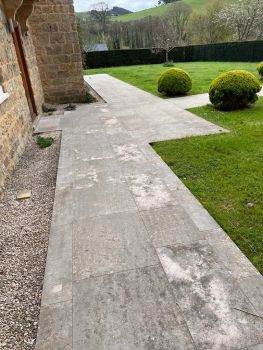
Dorset path before treatment - by Silex UK - with LTP Blackspot & Algae Remover
Regular patio maintenance brings lots of benefits. It retains a tile’s aesthetic, along with its performance, and helps reduce the need for intensive cleaning and re-sealing down the line. Most organic stains are relatively easy to remove, especially if the surface has been sealed, but there are some that can prove more difficult, like black spot.
What is black spot?
Despite its name, black spot can be black or white and it originates from plants and trees. This dust-like lichen microspore is carried by the wind and rain and it colonises on stonework, taking about 2-3 years to get really established below the surface. Black spot thrives in damp, shady places, sending its tendrils or ‘hyphae’ down into the stone’s pores, searching for nutrients. It’s a particular menace in porous stone, as its open texture enables the microspores to spread more easily, but even less porous materials like porcelain aren’t immune. Here, the lichen can still create a slippery residue on the tile surface.
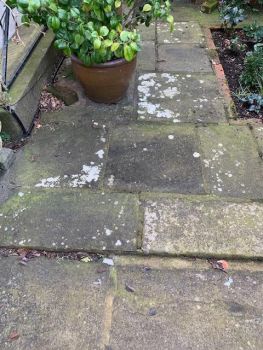
White black spot in Chiswick, before treatment with LTP Blackspot & Algae Remover by Silex UK
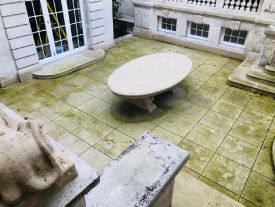
A deeply stained terrace in London, before treatment with LTP Blackspot & Algae Remover by Silex UK
Why water doesn’t work
A pressure washer and, sometimes, a dose of household cleaner is a common go-to treatment. However, this doesn’t work because hyphae become anchored into place below the surface. In fact, the extra dose of water only makes conditions even better for the rampant lichen. Also, pressure washing can damage the surface of the stone, loosen the grout and, if any protective sealer is applied, it will damage that too.
A specialist, two-pronged attack is necessary in order to remove black spot stains and the microspores below the surface. Any treatment used needs to have a bleaching action, to restore the colour of the tile or paver. It also needs to target the hyphae below the surface. But care should to be taken. If a treatment is acidic, it can damage acid sensitive material and erode the grout joint.
Removing stains and preventing regrowth
Giving results in as little as two hours, LTP Black Spot & Algae Remover targets organic residue, restoring appearance to natural stone, concrete, brick and porcelain. Developed to deep clean new and existing paths, patios and driveways, the treatment targets black spot, lichen, moss, algae and other stains caused by damp and slippery leaf matter.
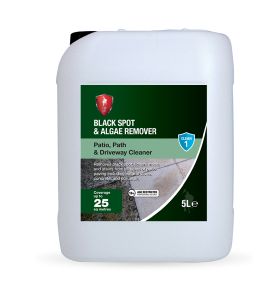
Three case study examples, shared by Alastair Niddrie from stone maintenance specialist - Silex UK - illustrate treatment with LTP Black Spot & Algae Remover at sites throughout the UK: The first – a York Stone and brick installation in Chiswick – had a build-up of green algae and black spot over 30 years. As well as white and black staining, the lichen was creating a serious slip hazard. At the second site in Dorset, a large limestone patio was stained with black spot, algae and dirt. The client was considering replacing the patio as repeated jet washing hadn’t resolved the issues and had damaged some areas of paving. The third site – a courtyard in London – was also deeply stained with black spot and algae.
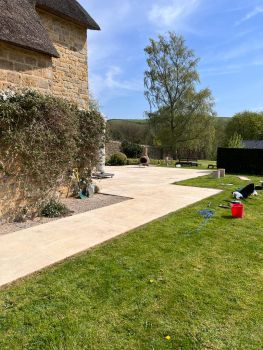
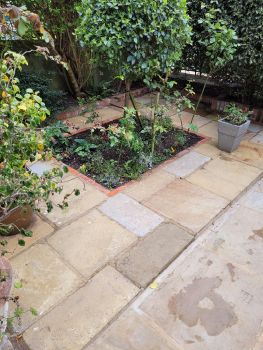
Dorset - after treatment Chiswick - after treatment

London - after treatment
“These types of stains are notoriously difficult to remove and a blast with a jet wash just makes matters worse. We’ve found a solution with LTP Black Spot & Algae Remover. It’s formulated to cling to the surface and once absorbed, it breaks down the hyphae within the stone porosity, as well as the slippery residue on the tile surface. A bleaching action also removes the staining, to restore surfaces to their former glory. We’re delighted with the results and now routinely use the treatment on all patio refurbishments,” explained Alastair.
Before application of LTP Black Spot & Algae Remover, surfaces should be swept clean. The treatment is then applied neat, using a watering can or light pressure garden spray, where it fizzes during treatment. It should be left to act for 2-4 hours and surfaces are then hosed with clean water. The solution can be used on dry and slightly damp surfaces and should be applied during a morning or afternoon of fair weather.
Newly cleaned surfaces can be protected with LTP External Stone Sealer or LTP Porcelain Protector. Both treatments create a barrier without altering surface appearance; this prevents absorption of moisture and organic particles, reducing staining and the spread of algae, mould and black spot.

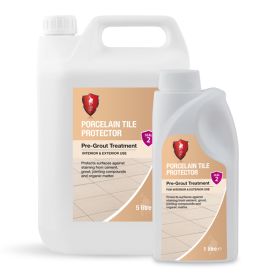
To find out more, please visit http://www.ltp-online.co.uk. For further information, please contact LTP on tel. 01823 666213 or email [email protected]
To contact Silex UK, please visit https://silexuk.com, tel. 0207 504 1070 (London Office) or 01225 650122 (Bath Office) or email [email protected]
ends -
For media information and photography, please contact Angela Fitzhugh PR Ltd on tel. (01579) 673026 or email [email protected]



